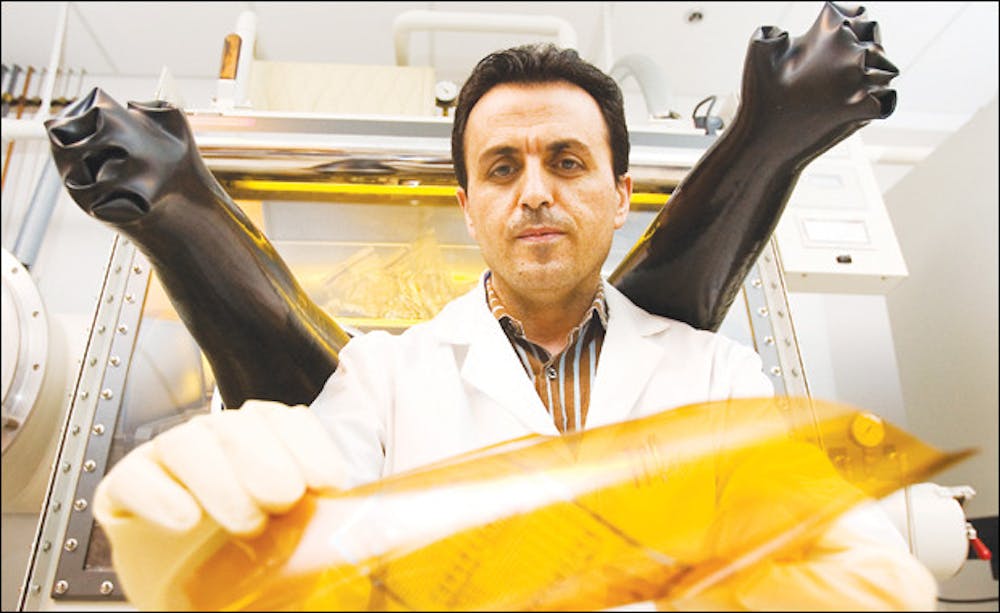Researchers at ASU are delving into new and improved forms of solar energy, which could lead to less dependence on non renewable sources of energy and a better environment in the future.
A University engineering research project received a three-year extension grant of $3.7 million at the beginning of this year to create more effective and less expensive solar-power sources.
Ghassan Jabbour, an engineering professor in the School of Materials and director of the Advanced Photovoltaics Center, is the head of the project.
The goal of the project is to “create low-cost, efficient solar cells,” Jabbour said, which are devices used to generate electricity from light incident, such as sunlight, on them.
This will be the fourth year for the research project, which is funded by Solterra Renewable Technologies Inc., a U.S. solar-cell company, and Nitto Denko Corporation, a Japan-based flexible technology company, he said.
Jabbour said the research will create these new solar cells with the use of quantum dots, which are nanoparticles used in solar cells, and a printing technique.
The dots are around a few nanometers, Jabbour said, and are comparable to a piece of material cut into tiny pieces.
By changing the size of the quantum dots, different light is emitted or absorbed, he said.
“[The quantum dots’] attractiveness is that they absorb light, and for every photon, which is the light particle, they generate or have the potential to generate more than an electron,” Jabbour said. That is more than normal solar cells, which only generate one electron and one hole, which is the absence of an electron, he said.
Quantum dots will generate more than one electron and hole pair per photon — creating more light in an efficient manner, Jabbour said.
“If you have 100 photons, you’re [hoping to get] 200 to 400 electrons out, which is way above what current commercial solar cells can do,” he said.
Jabbour said the quantum dots currently have an efficiency of 3 percent compared to more expensive solar cells, which have almost 43 percent efficiency in some cases.
“In theory, quantum dots can have this kind of efficiency, but in practice, it will take time — it will be achievable in the near future,” he said.
The use of printing techniques, like silk-screen printing, can also be used to produce many solar cells, Jabbour said, though he added that a lot of knowledge about material science is necessary in order to make the process reliable.
Jabbour said the current solar-cell printing techniques can be applied to quantum dots in the future, since printing is a fast and cost-efficient option.
“The money for this particular project is so that we can come up with a printing approach using printing techniques … to optimize the device performance, as well as lower the cost of manufacturing,” Jabbour said.
Another part of the project will focus on making solid-state lights in the future, he said.
“[The project will] make lights that are cheap to make, but they [will] give you enough brightness at a much-reduced consumption of power,” Jabbour said.
He said the whole research project could lead to improved, light-weight solar cells on buildings and the possibility of a cheaper solar-cell farm.
Inho Kim, an engineering graduate student in the School of Materials, started helping Jabbour with the quantum-dots research project at the end of last year.
Kim worked previously with Jabbour on organic solar cells but also decided to work with quantum dots because “there’s more of an opportunity to work with technology,” he said.
“In the future, you can see the potential to commercialize the technology,” he said.
Kim said he wants to continue the solar-cell technology research in Korea after he graduates and realizes the potential impact the research could have.
“We can reduce the cost or minimize the effect to the environment,” he said.
Reach the reporter at reweaver@asu.edu.




